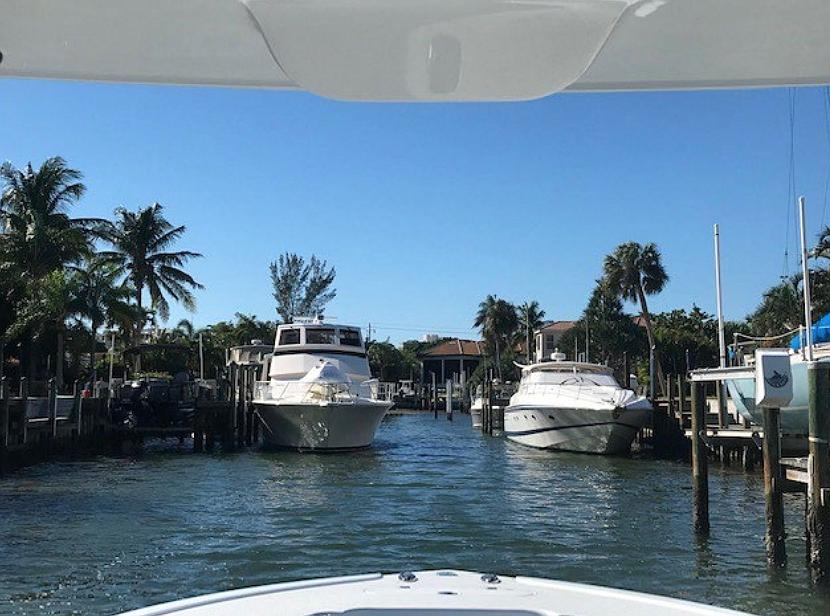- November 25, 2024
-
-
Loading

Loading

Frustration with a wider-than-normal boat docked in a neighborhood canal navigated its way to Town Hall for the second time this year, but commissioners decided the dispute wasn’t broad enough to warrant action that would affect the entire town, instead urging homeowners associations to handle individual issues within their own boundaries.
On Oct. 17, Kathy Callahan, the president of the homeowners association of Country Club Shores I and II, along with her husband, Todd, returned to the commission to discuss again the problem of navigability in their canal.
She had previously come to the commission June 6 about the issue of the large boat moored in the canal, making navigation difficult, there since November 2021.
The town has rules in place that state that permanent structures, such as docks, may not project into a canal more than 30 feet or 30% of the total width of the waterway. The town’s ordinance, hammered out in early 2020, does not mention boats as obstacles, though.
The Callahans argue that their evidence shows the vessel impeding into the canal by more than 50% of the width.
“If we didn’t have a 30% rule, then I don’t think this would make any sense,” Todd Callahan said. “We do have a 30% rule in the town as far as dockage and canals are concerned. I think all that we are trying to articulate is putting a boat that is permanently moored on something that you have already approved at a limit doesn’t make sense.”
The 2020 change sought to eliminate the possibility of new docks being built directly opposite of existing dock, though at the time, town leaders said their main concern were narrower docks largely in the north end of town, not wider ones in planned such communities as Bay Isles or Country Club Shores.
The Callahans’ presentation to the commission in June included a petition signed by 11 residents and featured pictures of the channel and a timeline of the issue’s development.
When initial complaints were received, the town sent a police department boat to assess the situation and found navigation was not impeded.
However, the marine patrol boat is much smaller than those owned by homeowners in the neighborhood. Town Attorney Maggie Mooney said that the lack of presence of a larger vessel that was unable to navigate the canal at the time the police department investigated the issue likely had an effect on the department’s findings.
If a larger boat was present at the time, or the owner had made the call about a lack of navigability, then the rule prohibiting limiting canal access could come into play.
“I would suggest you find some friends with wide-beam boats and start that process,” Commissioner Mike Haycock said.
On the barrier island, the majority of neighborhoods on the bay side that have canals are governed by a homeowners association. Some have stronger rules for boats than others, including what size boat is allowed in its waterways.
Commissioner BJ Bishop asked Town Manager Tom Harmer if any other complaints had been sent to him or the town regarding the navigability issue, stating that the responsibility of the commission is to write code for a community, not just to fix the issue of one individual.
“This one residence is the only residence that I have heard we have a potential problem with,” she said. “Are there other instances of this that say ‘for the health, welfare and safety of all of Longboat Key’ we need to write a new ordinance?”
Ultimately, Harmer’s answer was that he was unaware of any other complaints of similar issues on the island.
Callahan said her homeowners group “really can’t enforce anything on the water.”
Haycock urged the Callahans to seek legal counsel, even with the expense, to help them “put teeth” in the bylaws, so down the road they are able to enforce rules on their residents.
The lack of other complaints led the commission to decide not to draft an ordinance, but rather asked staff to investigate how a change to the rules might affect existing bylaws of HOAs on the barrier island. They also urged the couple to gather additional information from the neighborhood’s residents that the boat issue is affecting.